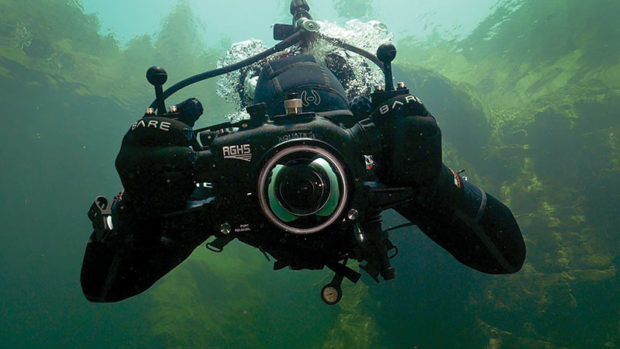Choosing Your Frame Rate

Slow motion video is all the rage these days. It’s no longer good enough to see a manta ray gliding over a wreck; people want to see it at half speed. However, before you slow down your media on the timeline, there are a few things you should know about how the camera records individual frames of data.
If you have taken a moment to dig into your camera menus, you might have come across a screen that permits you to select a frame rate. You might never change this from its default setting, but understanding how frame rates affect your visuals will help you make creative editing choices and assist you in selecting the features of a new camera that are important for your creative vision.
Understanding frame rate
A frame rate describes a number of frames or pictures that your video camera takes every second. These individual shots are animated into a moving picture that your brain can fuse into a flowing visual story. Not to be confused with shutter speed, a frame rate is the number of pictures shot per second. On the other hand, shutter speed is the duration of the exposure for each of those frames. The general rule of thumb is to make the shutter speed double that of the frame rate. In other words, if you are shooting 25 fps, then a shutter speed of 1/50 sec would be a good choice.
Most cinematic movies are shot at 24 fps and broadcast is shot at 30 fps. In Europe, the PAL system is used rather than North America’s NTSC standard. The PAL frame rate for broadcasting is 25 fps. These defaults determine the project’s frame rate. Most cameras are optimized to offer the highest quality at these rates.
You may want to make some adjustments to the frame rate for creative purposes. These creative choices help you to slow down or speed up the action in a sequence. During the editing process, you can manipulate the timeline by stretching or compressing footage shot at 60 fps. If you drop it into a timeline with 24 fps, you can create a slow-motion effect. If you shoot at a lower frame rate, you can speed up footage much like a time lapse. However, bear in mind, if your footage is captured at 30 fps and if you try to slow it down too much, it will look like a jittery slide show. If there are not enough frames to blend the sequence, so the human brain gives up.
So-mo
Normal slow motion is generally shot at between 48 and 60 fps where dramatic slow-motion footage that looks more like stop-time is shot between 90 and 120 fps. This footage can be ramped down in speed to bring attention to a critical moment such as a jawfish opening his mouth that is full of eggs. Shooting at very high speed might also help you find a few moments that are well stabilized. Very few cameras are capable of 180+ fps and super slow motion.
Slow motion can be a great tool to bring attention to a particular animal or action, but don’t overuse the trick. If the footage segment is too long, people lose interest. Short pieces of slow motion are appealing, but longer ones can appear dull and contrived.
So the next time you have a chance to capture some remarkable marine life, experiment with a higher frame rate to give you options in the edit suite. Then you can enjoy your footage on the screen – perhaps twice as long!







